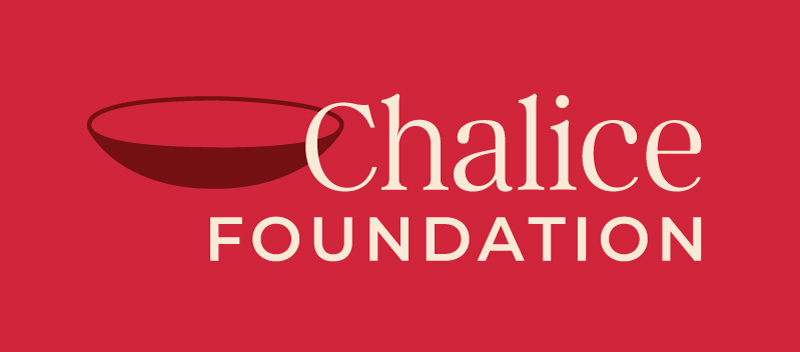We are delighted to have the founder of The Nurture Place Rebecca Filby take us through four dimensions of what constitutes a healthy menstrual cycle. Last week Rebecca took us through cycle length and blood volume, and this week we continue our learning on what is normal in terms of colour and quality of menses and pain.
What is a Healthy Cycle?
Ultimately a healthy cycle should be a walk in the park; free of pain or other symptoms that significantly impact you day to day. Here’s the breakdown:
Colour and Quality
Generally people are a bit grossed out by the idea of checking out their bodily eliminations too closely, but us medical folk (I can say that as a Clinical Nurse Specialist) love it! I am no stranger to asking all about the intimate details of your “ones and twos” and no less attention should be paid to “that time of the month” either. As the endometrium sheds small blood vessels are exposed, from which the main component of menstrual blood exudes. Naturally the broken down endometrium makes up part of the menstrual blood, and it is not unusual to see bits of tissue. The western world is a bit more lenient on the colour of your blood than Traditional Chinese medicine (TCM) is, with a large spectrum of colours being considered normal. It is suggested that it is more to do with how old the blood is and its rate of flow, with some inclination that if you have endometriosis or PCOS you may be more likely to experience brown or black period blood. In western medicine, the colour of period blood is more significant if it looks more like a grey or green discharge, as would be present in vaginal infection. Clots are generally not seen to be an issue unless they are associated with heavy bleeding, are larger than the size of a 20 cent piece, are passed mid cycle or are passed painfully. These symptoms could point towards many of the aforementioned conditions.
TCM scrutinises your menstrual blood a bit more thoroughly. Bright red blood may represent heat in the blood; pale blood suggests blood deficiency; purple or blackish blood is indicative of blood stasis or a cold pattern. If you are experiencing blood clots, regardless of clot size or if your period is scanty or heavy, these are associated with blood stagnation. The viscosity of your menstrual blood gives information about the health and flow of your blood and qi*.
Pain

How often is this the way our periods are depicted?!
Ah, period pain. That uninvited visitor that follows Aunty Flow to your house every month (or so) and kicks you right in the vagina. Over the years I have been literally doubled over with painful periods. The thing was, I thought that was normal. Everyone has painful periods, right?! Pharmaceutical companies have made that “fact” a significant part of their marketing strategy. If you google “period pain” you will come across a bunch of reputable health sites that tell you that, “yeah, most women experience some level of pain during menstruation at some points in their life; exercise, put on a heat pack or take analgesics”. They do acknowledge that there is the potential for underlying conditions bringing about the pain, but ultimately the list of recommended treatments remain the same; except for in extreme circumstances when invasive procedures are mentioned.
Period pain is not normal. TCM recognises that pain is a reflection of the state of flow of blood and qi. If either become impeded in flow, the severity of the disturbance determines how severe the pain will be.
It is these barriers to the smooth flow of qi and blood that also precede other unfavourable period symptoms such as headaches, bloating and irritability (to name a few).
So there you have it! I hope that I have given you some insight into your menstrual cycle, or at the very least been the catalyst for you to do your own exploration of the topic and your own body. Despite the fact that our menstruation has been a tool in women’s repression over the years, it is in fact our power. Our cycle, our bleeding, is the embodiment of life and death. Without it none of us would be here.
*Qi is described as an energy that needs to be in balance for good health. According to TCM, qi is life force or vital energy.

Rebecca Filby
Bec Filby is a qualified, registered shiatsu practitioner and the founder of The Nurture Place, a supportive space for women’s wellness. In 2020, to compliment her bodywork and passion for women’s health, Bec became a certified Wholistic Women’s Wellness Mentor. Bec has a Bachelor of Nursing and has dedicated the last 12 years to being of service to the health and wellness of others. She is on a never-ending journey of discovery and growth, and dreams of a world in which menstrual health and awareness are accessible and not just accepted but celebrated. Bec was initiated into “the motherhood” 4 years ago thanks to her beautiful daughter (and soon-to-be big sister). She approaches what she considers to be her most important role with love, gratitude, a great deal of patience and a bucket full of humour. Bec is based in Geelong with her husband and daughter, growing baby belly, golden retriever, and budgie.
References:
– Dr. M. D. Mazumdar, MD, <http://gynaeonline.com/late_period.htm>;
– <http://cm-cure.com/node/688>;
– Tolu Oyelowo DC, Mosby’s Guide to Women’s Health, 2007, <https://www.sciencedirect.com/topics/medicine-and-dentistry/menstrual-cycle>;
– <https://www.menopausenow.com/irregular-periods/early-menstrual-period>;
– <https://agelessherbs.com/irregular-periods/natural-alternative-herbs/>;
– <https://womhealth.org.au/conditions-and-treatments/understanding-your-menstrual-cycle-fact-sheet>;
– Dr Andrew Orr, <https://www.bellybelly.com.au/conception/what-should-a-healthy-menstrual-cycle-be-like/>;
– Barbara Loomis, LMT, RES, <https://alignmentmonkey.nurturance.net/2015/menstrual-cycle-vital-sign/>;
– Wei Liu, TCMD, MPH, LAC and Changzhen Gong, PhD, MS, The American Academy of Acupuncture and Oriental Medicine, <http://www.tcmpage.com/hpirregular_period.html>;
– <https://www.medguidance.com/thread/Blood-Clots-During-Period.html>;
– Jenny Hills, Nutritionist and Medical Writer, <https://www.healthyandnaturalworld.com/period-blood-color/>;
– <http://www.tcmtreatment.com/images/diseases/menstruation.htm>;
– <http://www.shen-nong.com/eng/exam/specialties_menopause_menstrual.html>;
– <http://www.goldentcmclinic.com.au/heavy_period_50.html>;
– <https://jeanhailes.org.au/health-a-z/periods/heavy-bleeding>;
– <http://www.menstruation-info-with-doc.com/menstruation-blood.html>;
– <https://www.traditionalacupuncture.com.au/womens-health/period-pain/>;
– <https://www.healthdirect.gov.au/painful-periods>;
-<https://www.betterhealth.vic.gov.au/health/conditionsandtreatments/menstruation-pain-dysmenorrhoea>;
– Dr Jerilynn C. Prior, <https://www.cemcor.ubc.ca/resources/very-heavy-menstrual-flow>;
– Giovanni Maciocia, The Foundations of Chinese Medicine.


